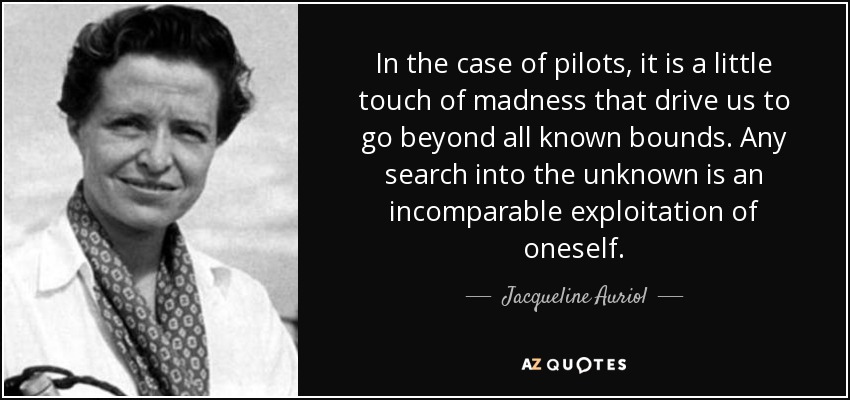
During World War II, Jacqueline Auriol, the daughter of a shipbuilder, chose to remain in France under a false identity and joined the French resistance. ”I began to realize that I loved danger,” she told The Washington Post in 1970.
Her addiction to danger outlasted the war, and – captivated by the stories an ace pilot told at a party – she asked that he teach her and her husband how to fly an aircraft. She started flying in 1946 and earned her pilot’s license in 1948. As she and her husband were both from prominent families in French society (her husband’s father would go on to become President of France), their flying exploits were criticized and ridiculed. It was not long before her husband dropped out of the sport, but she continued to pursue it with a growing vigor and passion. Soon she became well known as a stunt pilot and professional aviator.
In 1949, as a passenger on a small twin-engine commuter aircraft, Auriol was critically injured in a crash. It took over 33 reconstructive operations over two years to fix the damage done to her face. Auriol, never one to sit still, spent her time in recovery studying for an advanced pilot certification. Despite the accident, she went on to receive her military pilot’s license just a year later in 1950.
Auriol went on to become not only France’s first female test pilot in 1954, but one of France’s top test pilots of any gender. She set five world speed records in the 1950’s and 1960’s. Auriol was the second woman to break the sound barrier, right after Jacqueline Cochran, an American pilot. The two women would become famous rivals in the air, each flying higher and faster to break one another’s records.
Auriol flew over 100 different types of aircraft throughout her life, including the supersonic Concorde, and received aviation awards from Presidents Truman and Eisenhower. Her own country also awarded her France’s Legion d’Honneur for her achievements in the sky.